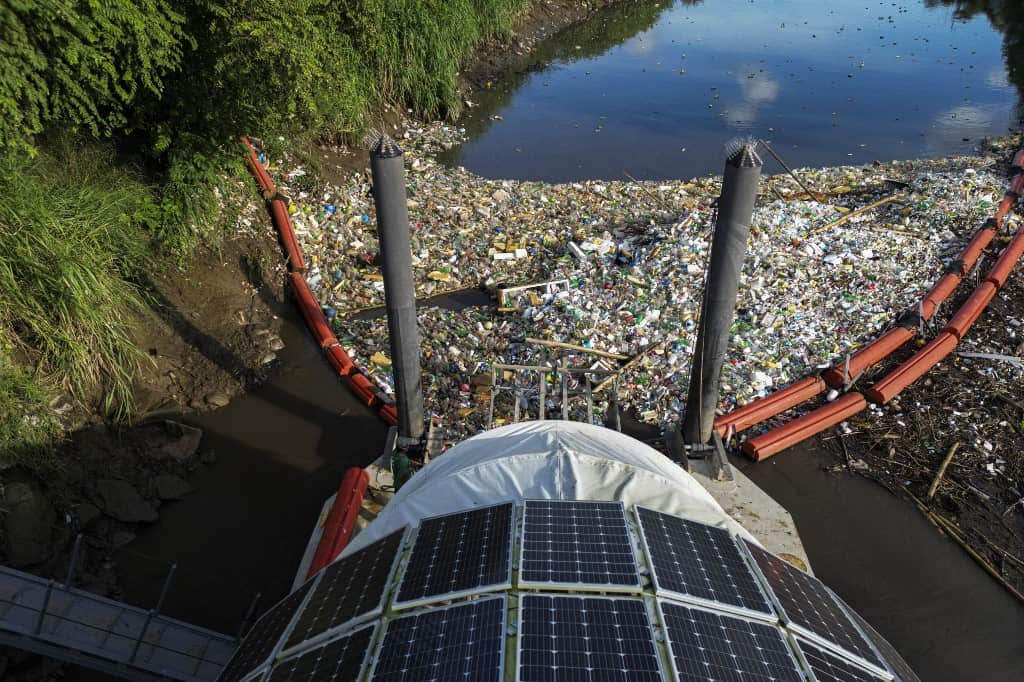A giant hydraulic machine named Wanda has prevented hundreds of tons of garbage from ending up polluting the mangroves near Panama’s capital. All kinds of waste flow down the nearby rivers which, if nothing prevents it, end up on the coast of this city located on the shores of the Pacific.
To combat this pollution, an NGO put Wanda to work, a machine that captures waste and separates what can be recycled. “We have captured 256,000 kilos of waste that would be in the mangrove and in the sea if it weren’t for Wanda” since it began operating in September 2022, Laura González, executive director of the Marea Verde Foundation, in charge of the project said.
“It’s a lot” of garbage, González says. “I don’t think anyone wants to live surrounded by garbage and no one wants to see the river in these conditions,” she adds. The garbage is carried by the current of the San Juan River to a barrier that crosses the channel.
There, several operators separate the waste, which is sent via a long conveyor belt to a huge container to be recycled. The operation takes place amid a constant rattling of the belt on the banks of this river located in the middle of a wooded area of the exclusive Santa María capital urbanization.
The energy that feeds Wanda is entirely green: a hydraulic wheel and solar panels. For now, it’s the only river that has this system.
Unacceptable disaster
This coastal mangrove area is a vital resting point for hundreds of thousands of birds on their migratory route, but it is threatened by pollution and urban growth. Experts estimate that 30% of Panama City’s garbage is not collected and that about 100,000 tons of waste end up in the sea each year throughout the country.
When it rains, the current drags the garbage dumped on the riverbanks, something common in the neighborhoods of this capital of 1.4 million inhabitants. “We’re hitting it hard every day, especially so that this waste doesn’t reach the beach shore,” Ezequiel Vargas, foreman of the crew that operates Wanda said.
“Sadly, the constant of garbage is daily, even if it doesn’t rain, something always arrives here,” he adds. In Panama City and surrounding areas, the crisis in garbage collection is endemic. In the streets, there are piles of uncollected garbage for days, while all kinds of waste pile up on the coast.
The authorities acknowledge the problem: “The environmental disaster of the rivers is unacceptable, we cannot continue polluting our rivers and seas,” said Juan Carlos Navarro, Minister of Environment, in July when he took office.
It’s crazy
According to a UN Environment report, in Panama City about 2,300 tons of garbage are generated daily, of which 30%, mostly plastics, end up in rivers, the coast, and the sea. The same report highlights that 61,500 tons of solid waste from Panamanian cities are thrown into the sea each year through sewers and drains. An additional 40,657 tons of solid waste from rural areas flow down rivers and streams.
Among the garbage that reaches Wanda, plastic bottles and shampoo containers stand out, although soccer balls, toys, floats, food containers, and even refrigerators can also be seen. “It’s crazy, these days we got a plastic unicorn, I really think we could make a gallery here,” says González.
We must remove the plastic
According to Marea Verde, there are eight other facilities similar to Wanda in the world, including in the U.S. city of Baltimore, but the one in Panama is the only one in Latin America. Wanda (acronym for “Wheel and Action”) began operating in the Juan Díaz river and in 2023 captured 130 tons of waste.
But the amount of garbage thrown into the river continues to increase. “It’s likely that this year we’ll exceed what we collected in the first year,” González says. “To have health, we must properly dispose of garbage and remove plastic from our natural sources, that’s the task Wanda is doing,” highlighted Minister Navarro.

